
Google recently announced that it expanded translated results in the search results to more languages, which was great to see. Also, it’s important to understand the data is available in Google Search Console’s performance reporting (and available via the API with some added benefit). I’ll explain more about that soon.
But while speaking with site owners and SEOs, I’ve found there’s a lot of confusion about what translated results are, how they show up in the SERPs, and how to view the data. In addition, many don’t know that you can view that data by country, which can be very helpful when you are determining the language and country combinations when translated results are triggering.
Note, until this expansion, you would often see India and Indonesia heavily in the country data since Google was not widely translating the search results for many languages. But with the additional languages Google announced, more countries have started showing up in the GSC data. Based on this expansion, and the data available to site owners, I decided to write this post explaining how to find, export, and analyze translated data available in Search Console.
In this post, I’ll first explain how translated results work and how they appear in the SERPs. Then I’ll walk you through bulk exporting the results by country via the GSC API using Analytics Edge (which works in both Excel and Google Sheets, and across PC and Mac). Let’s jump in.
What translated results looks like and how it works.
First, Google can automatically translate the title link and snippet in the search results when it determines that will be helpful for users. When that happens, it looks like the screenshots below. The title link and snippet will be translated with a small message below the result explaining that happened. There’s also a small Google translate icon.
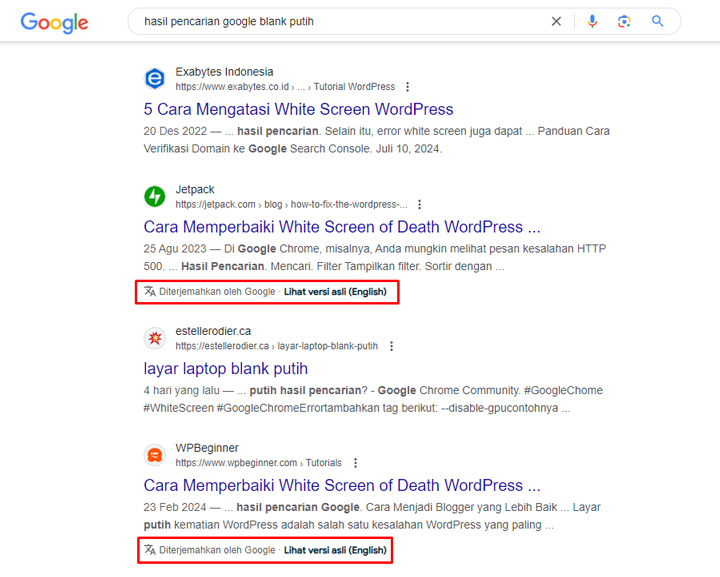
But the translation doesn’t stop there. If you click through the listing to a site, the page will also be translated via Chrome. The Google Translate menu will be visible at the top of the page so you can change the settings, if needed.
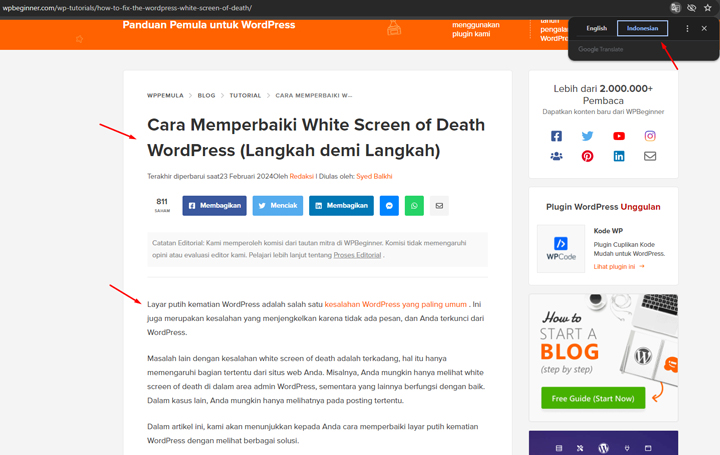
Understanding the languages that Google is automatically translating can help site owners and SEOs determine which languages they might want to translate their content to for users. For example, you might want to have someone fluent in that local language translate your content, and then use hreflang to signal to Google the language and country combinations (for swapping in the right content by language and country in the search results).
As Google explains in its documentation about translated results, it may translate results to Arabic, Bengali, English, French, German, Gujarati, Hindi, Indonesian, Kannada, Korean, Malayalam, Marathi, Persian, Portuguese, Spanish, Tamil, Telugu, Thai, Turkish, Urdu, Vietnamese. And that’s across both desktop and mobile.
A quick note about opting out of translated results:
Site owners can opt-out of having Google translate their content in the search results by using the meta robots tag using ‘notranslate’ or by using the x-robots-tag using the same rule. And you can isolate Googlebot, if needed. But just understand that doing so opts you out of ALL translation features in Google Search. So it’s a big hammer. Be careful.
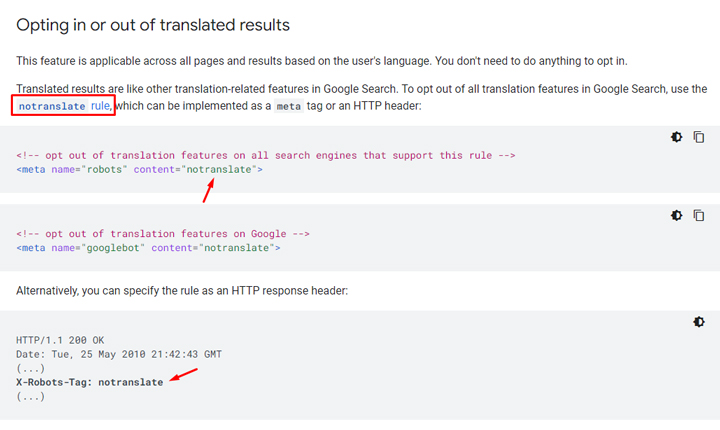
How To Find Query and Country Combinations:
First, you can find the queries triggering translated results by going to GSC’s performance reporting, clicking the Search Appearance tab, and then filtering by translated results. But that only includes up to one thousand rows and the GSC UI doesn’t provide the country.

Being able to export ALL of your data would obviously be very helpful (which I have covered many times in the past in my tutorials about using Analytics Edge to bulk export GSC data). And beyond that, having the country would be very helpful for testing how the search results look when Google translates content, and how your pages look when users click through to your site. Having that data can also help you form an hreflang strategy if you do go down the path of translating the content on your own (using humans fluent in a local language translate the content).
To quickly summarize, the GSC UI doesn’t provide more than one thousand results, or the country per query. But there’s good news. The API does provide the country and will let you export all of your GSC data! So exporting the full results via the API will provide all of the queries triggering translated results, along with the country the user was in when that happened. Again, that can help you on several levels, including helping you form a strong hreflang strategy, if needed.
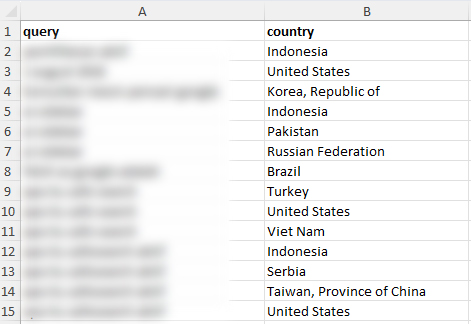
How to bulk export translated results by country using Analytics Edge
The cool part of creating tutorials over the years is you can leverage those older tutorials to expand functionality down the line. In 2019, I wrote a post explaining how to export GSC data by Search Appearance. For example, exporting data by review snippets, merchant listings, FAQ, and more. Well, you can use that approach to export translated results too.
This means that you can simply follow that tutorial and use the search appearance code for translated results when exporting the data via the API. Also, you will need to add the country dimension in the fields tab to make sure you get both the query and the country when exporting your data. Don’t worry, it’s very easy to do.
First, when you are selecting dimensions, make sure to add both query and country:
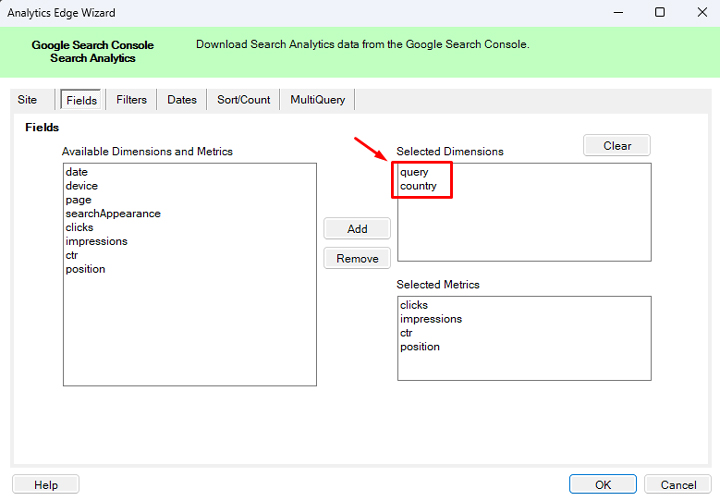
And when you are adding filters, you should use TRANSLATED_RESULT as the code for search appearance. That code needs to be exactly what I listed above with the words separated by an underscore.
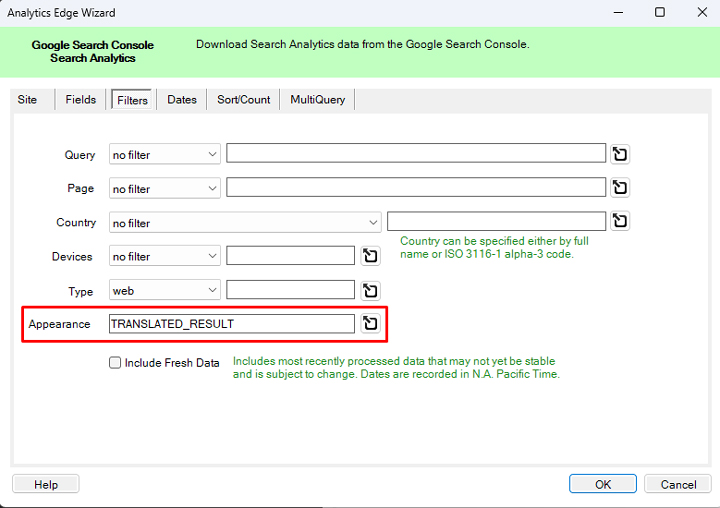
Then follow the rest of the directions in that tutorial for exporting GSC data via the API. You will end up with query, country, and then clicks, impressions, CTR, and position.
Final tips and recommendations:
- My first recommendation is for Google! It would be helpful to provide the detected language in the export versus just country. I’m not sure how easy that is to add for the GSC team, but that would be great now that Google supports more languages for translated results.
- For site owners, check the exported data and find often-translated content by query and country. Those could be good candidates for your own translation efforts. For example, having someone fluent in a local language translate that content for you. And then publishing that content and using hreflang to signal to Google the language and country combination. Then let Google do its thing by swapping in the right language version of your content when people are searching in certain languages and from certain countries.
- I also recommend exporting the results and actually checking the SERPs to see how this looks for your own content. You might find strange things going on with either the translation in the search results or when someone visits the translated page from the SERPs. It’s also smart to check the user experience for when that happens.
- And as I covered earlier, for site owners that don’t want Google to translate their content in the search results, they can use the meta robots tag using notranslate to opt-out of translated results. You can also use notranslate via the x-robots-tag to achieve the same result. But again, be aware that using notranslate will opt you out of ALL translation features in Google Search. Like I said earlier, it’s a big hammer, so be careful.
Summary: Know when your snippets and content are being translated by Google.
Now that Google expanded the number of languages it supports for providing translated results, it’s smart for site owners to analyze the data to make sure they are fully informed about how users are experiencing their content in in the SERPs. And with the help of the GSC API and Analytics Edge, site owners and SEOs can bulk export translated results, including both the query and country. As I explained in my post, that data can help site owners form a strategy for potentially translating their own content. I highly recommend exporting your own data today. You might be surprised with what you find.
GG
